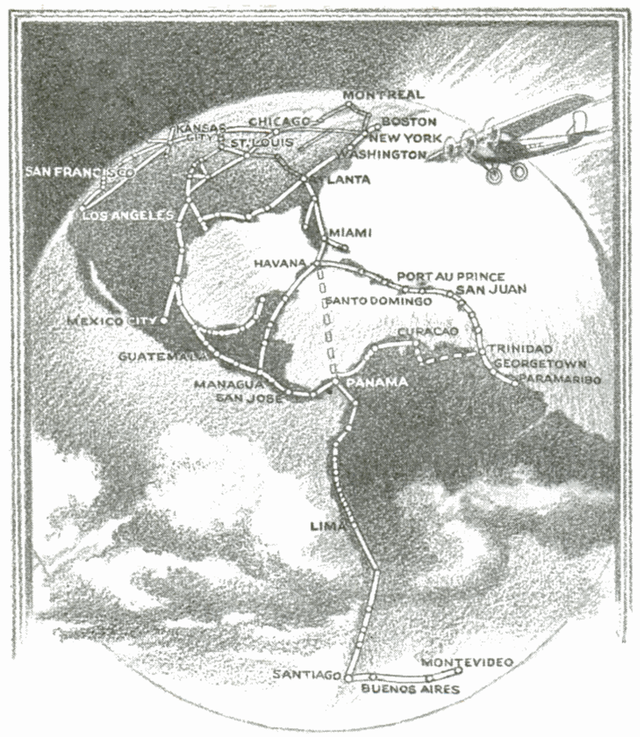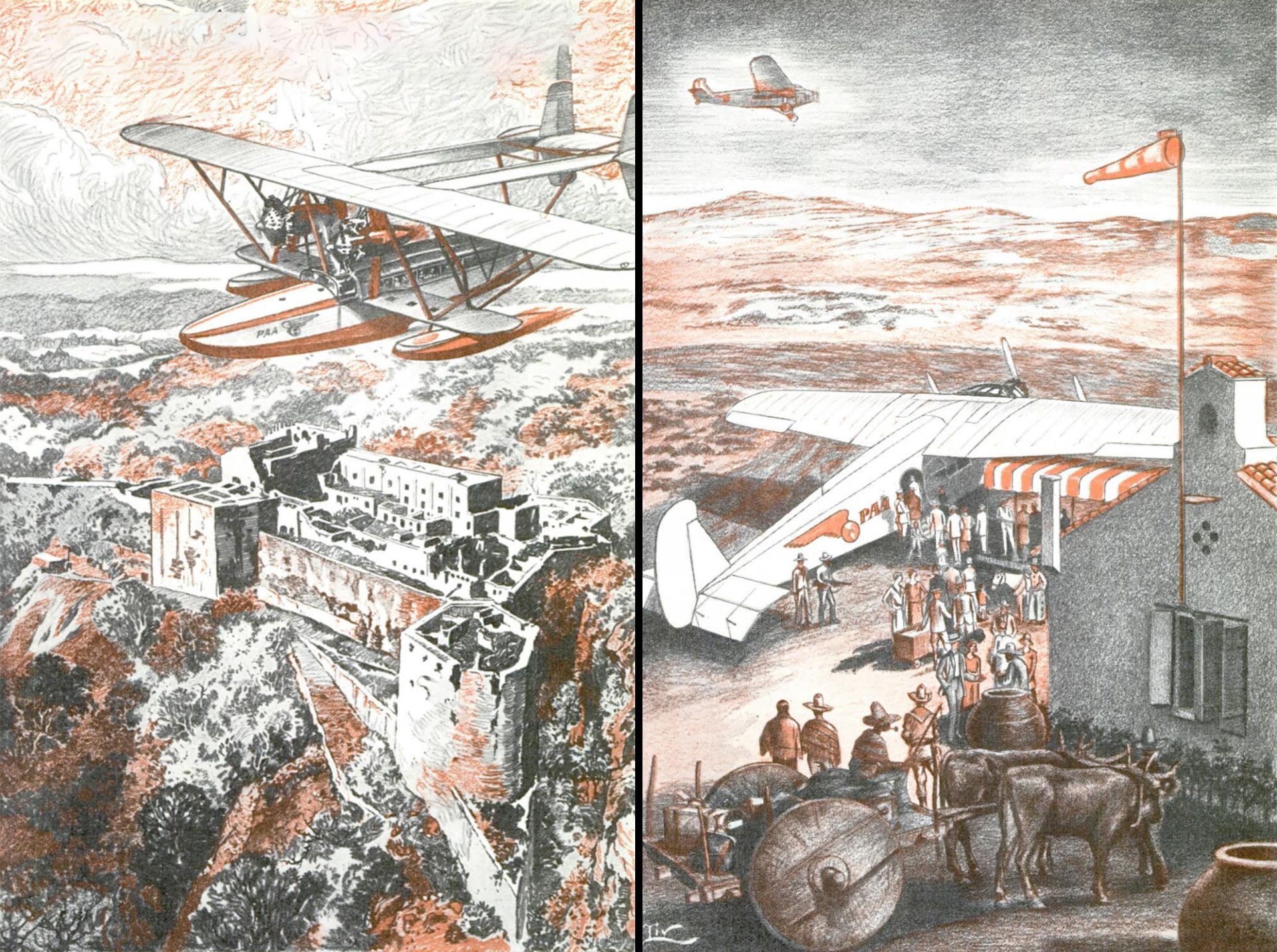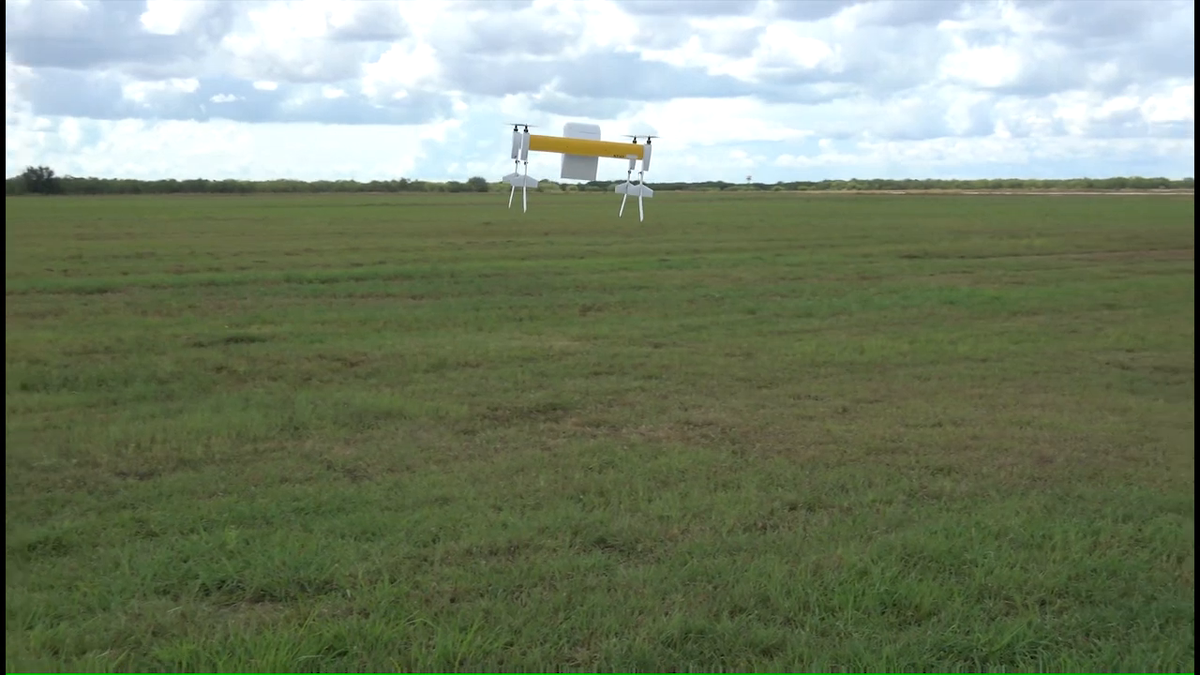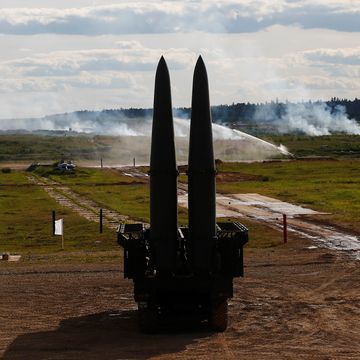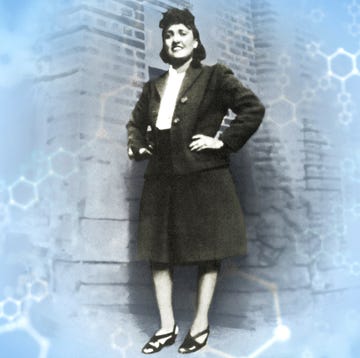In the February 1931 issue, Popular Mechanics reported on the dawn of transatlantic flight. Aviation pioneers had already proven that traveling fast distances in an airplane was possible, and now commercial companies like Pan American were beginning to put the idea to the test. These flights bare little resemblance to today's air travel and ideas of "floating islands" in the middle of the Atlantic would help break up flights as well as add some much needed security. The story is a startling glimpse at how air travel was beginning to change humanity forever.
With Central and South America already knit to the United States by air, the next step will be air mail and passenger service across the Atlantic. Bids for such a service already have been asked.
Colonel Lindbergh and other great aviators have demonstrated the feasibility of such service. They have flown the Atlantic, conquered the desert, the mountain ranges and the jungles. Long-distance flights, endurance flights, refueling records, the development of better planes, better engines, better radio-communication systems, and other improvements, lend themselves to the proposed service over the waves.
All that is needed for the regular transatlantic service is the arrangement of routes, the settling of necessary international negotiations and the development of equipment for the work, including the proper planes, landing and other facilities.
In view of what already has been accomplished and what is now under development, I picture, in the very near future, a three-day air-mail service between this country and Europe. Few persons realize it, but a transatlantic airmail route already is in operation and has been for about two years. French planes fly from Toulouse down the Spanish and African coasts to Natal, Brazil, using as a way station an anchored vessel several hundred miles from the South American coast. There the planes can be refueled and repaired if necessary. The ship breaks a long water hop, promoting greater ease and safety.
Details of the service between Europe and the United States remain to be worked out, but a feasible arrangement would be something like this: Base ports in this country would be New York, Baltimore and Charleston, S. C. Planes would leave the latter point for the journey across the Atlantic. The southern way, of course, is longer than the usual passage by way of Newfoundland, but the northern route, repeated flights have proved, is usually stormy and shrouded by fogs much of the time. Weather conditions are generally favorable most of the year by the proposed southern way.
Way points across the Atlantic would be established at Bermuda and the Azores. The long-distance water hops could be broken up by intermediate stations established on "floating islands." Some persons have smiled at the prophecies of inventors who are interested in projects of this sort, but we have learned not to smile too soon. So swift has been progress in aviation that it ill behooves the thinking person to laugh at such proposals. Whether the suggested floating islands will have hotel, swimming pool and miniature-golf facilities for patrons who desire to stay awhile, remains to be seen, but the essential idea of a man-made island in the form of an anchored or confined floating landing field suitable for planes to alight upon and to be serviced or repaired, is essentially sound and will probably be realized.
One solution of this problem, an economical and practical one, I believe would be to use vessels already constructed and now owned by the shipping board. They could be purchased, perhaps for as little as $50,000 apiece. It would be necessary to construct wide decks for landing facilities, but there would not be the expense of elaborate hoisting and propelling machinery essential to the usual airplane carrier. These vessels, equipped with radio transmitting and receiving apparatus, could be sent out into the Atlantic, stationed at strategic intervals along the proposed route and kept constantly in service as emergency landing and guiding ports for the aid of the planes.
Enough vessels of this kind could be purchased and fitted to form a virtual chain between the mainland, the intermediate islands and the European coast, so that the air route would be marked and serviced with emergency fields just as the present air routes over land are equipped. The vessels could carry, besides their radio and other equipment, powerful beacons for the guidance of night flyers. Their presence in the Atlantic would also be of help to other vessels. The entire fleet of them could be bought and made ready for such service at a total cost well within the realm of practicability.
One of the chief obstacles to long-distance flights has been encountered, not in the actual flight itself, but in getting into the air at the start. The plane is loaded with its necessary pay burden, that is, the mail, express or passengers that it must carry; then, in addition to this, it carries a great quantity of gasoline and oil. It is loaded to absolute capacity. The take-off is often a hazardous and trying affair, straining men and equipment to the limit and often wrecking the hopes of the expedition at the very start.
A solution of this problem could be worked out in a plan for refueling. The ship would be loaded with its pay load and enough gasoline and oil to take it, say 100 miles out. After it had ascended safely into the air and was well under way, it would be met by a service plane and refueled or rather given its full load of fuel from the air, thus saving the tremendous task of taking off with the huge burden of a full pay load and a maximum amount of fuel.
A thorough and dependable radio beacon and communication service would be installed for the constant guidance of all planes along the way. In case the floating islands had drifted from their set position, the fact would instantly be relayed to the pilots, and little difficulty would be experienced in establishing contacts. The vessels could easily be turned to favorable positions for landing, regardless of the direction of the wind; the hazards of fog and storms are continually being minimized by the development of better radio systems, improved planes and engines and more skilled pilots.
The overwater hops now accomplished in the Pan American service prove that planes, as now equipped, are capable of long-distance flights in safety. We could start a transatlantic air-mail service tomorrow with the equipment already available, but much more complete and efficient accouterments are rapidly being devised so that, when the service actually goes into effect, no detail will have been overlooked as to safety, speed, economy and comfort for pilots and passengers as well, for the mail planes will also carry people, and a hop to Europe through the air will be a matter of hours instead of days.
We have seen enough of the results of the establishment of air routes to Central and South America, and of the results of the few hops that have been made between America and Europe, to visualize what this regular service will mean in the promotion of international good will and friendliness. After all, the factors that hold the nations apart are largely geographical. When these barriers are literally swept aside as they are being eliminated through the use of the airplane, a large step will have been taken toward the cultivation of world unity of feeling. Geographical nearness is one of the important reasons for the unity of the United States. Friendliness with Canada and Mexico is being promoted because the invisible line between us and those nations is now even more invisible, due to aviation.
Air mail to Europe will cut cable expenses, quicken trade, helpfully supplement all other forms of communication now in effect, and will greatly increase the usefulness of the service already established to Central and South America, Man's flights to date prove the feasibility of the project. The necessary equipment, the routes, the personnel and the public co-operation are awaiting call. The post office department, as in the past, is lending its active aid toward the forging of this new link toward international good will.



